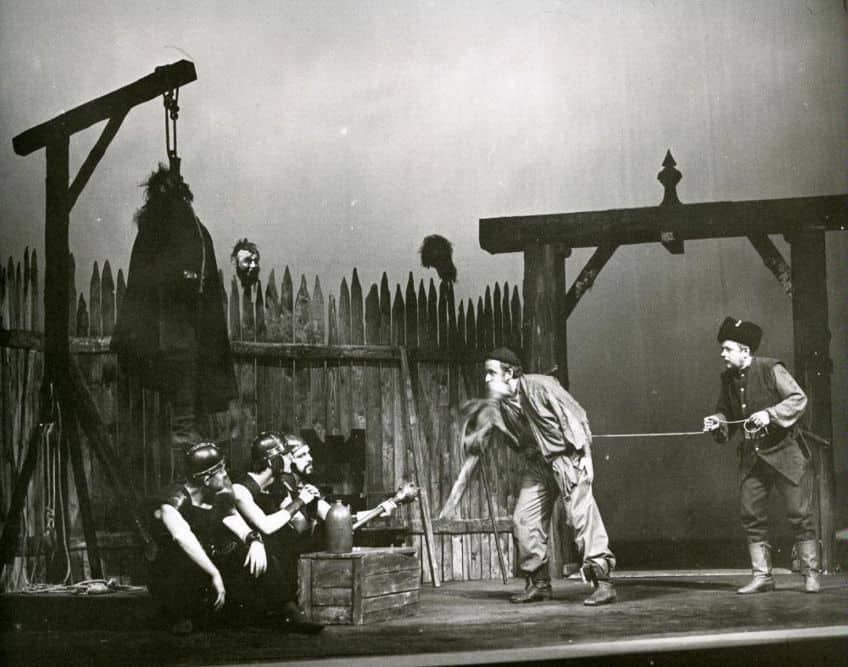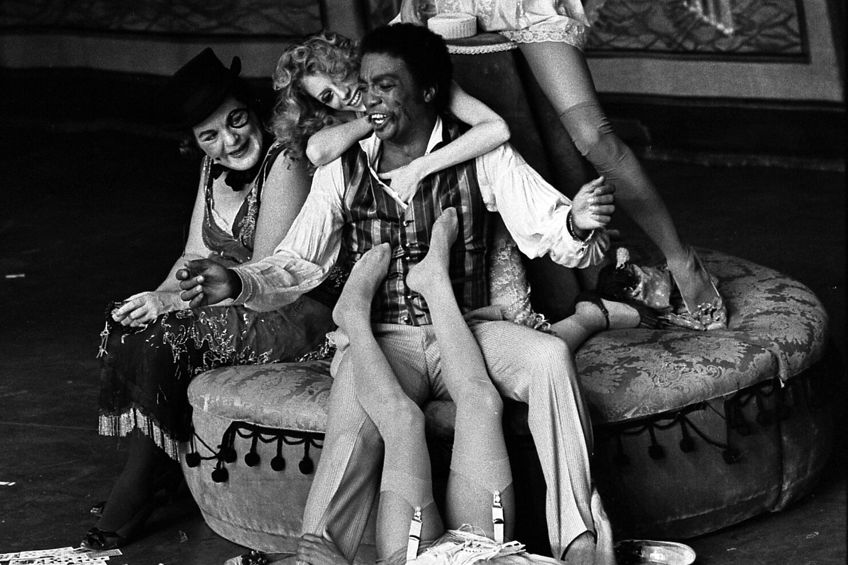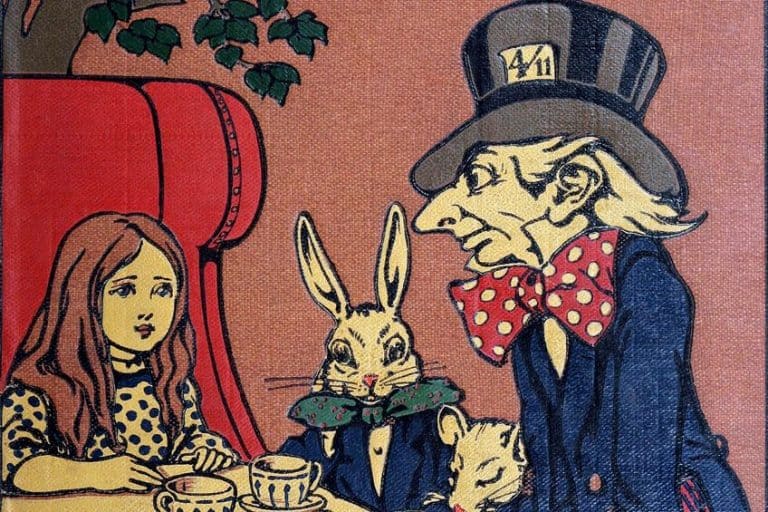Brechtian – Exploring the World of Critical Theatre
Today, we are going to have a look at a dramatic concept that was pioneered and named after Bertolt Brecht: the Brechtian. This is a kind of meta-dramatic method that often entailed refusing to allow the audience to experience a suspension of disbelief. We will explore a definition of the concept, some of the characteristics of the Brechtian, the uses of the Brechtian by both Brecht and others, and a number of examples of the Brechtian in theater. If you have no idea what the Brechtian is at all, then stick around and maybe learn a few things here and there!
A Look at the Brechtian
Our purpose today will be to examine the role of the Brechtian in theater. So, this means that our focus for the day will be entirely at the feet of the Brechtian, meaning that we will be looking at theater today! This will not be a particularly lengthy discussion and examination of the use of the Brechtian in theater, but it will be a good overview for those who may not be all that familiar with work of this nature. However, before we get into a deeper examination of the concept, let’s first check out a bit of a summary.

Summary of the Brechtian
Every now and then some term comes along that is based on someone’s name and so you have no idea what it means unless you too have that particular information on hand. This article as a whole will go into the concept of the Brechtian, but before we do so, let’s have a quick pause over here and check out a summary:
- The Brechtian is named after Bertold Brecht. This figure was a German writer who played a significant role in the 20th-century development of theater. His work can still be seen in the theater world today, especially when it comes to more meta-theatrical productions.
- The Brechtian is a focus on the critical. When it comes to the kind of theater that Brecht pioneered, epic theater, there is generally a focus on being critical of the topics being explored. The audience is encouraged to focus on the ideas rather than necessarily on the story that is being told.
- The Brechtian is used by writers other than Brecht. While Bertolt Brecht may have developed the techniques that have since come to be known as the Brechtian, other writers would take inspiration from him and set about creating their own works that had similar goals.
When it comes to learning something, I have always found that summaries work particularly well. They allow a nice and quick distillation of the information in an easy-to-digest structure that lets you quickly remember the primary points. In my old job as a teacher, I wrote far too many summaries for my students!
But, hey, they did help the students!
A Definition of the Brechtian
The Brechtian is a rather interesting concept for many different reasons, but chief among them is that it is a kind of meta-theatrical methodology. The word “Brechtian” comes from Bertolt Brecht, and he was a German writer with significant ties to the dramatic world. He would develop a unique style that was later emulated by others, and it would become immensely influential into the present day.

Some of the principal ideas behind the concept of the Brechtian is that it entails direct communication of sorts with the audience. It is not hiding the fact that it is a theatrical production and so it is fundamentally opposed to the idea of having a fourth wall. It instead breaks it throughout the production, incorporating the audience and the world at large into the play itself. While the work of Bertolt Brecht can be called Brechtian, it is a little strange to use a term like this for the actual person after whom it is named. For this reason, we generally refer to the work of other writers as having Brechtian elements rather than necessarily calling Brecht himself Brechtian. He was Brecht, after all!
The Characteristics of the Brechtian
When it comes to Brechtian techniques, there are quite a number of them that are worth mentioning. At the most basic level, all of the techniques are generally there to, in some way, break the fourth wall. Works in the Brechtian tradition are notable for denying suspension of disbelief and incorporating the audience into the production itself. The audience should never become complacent in their role in the theatrical space. In more specific terms, Brechtian techniques involve things like direct addresses to the audience, the intermingling of actors in the audience, the use of signs and other visual media to express and/or emphasize ideas and messages that the play may wish to use, the direct showing of the backstage aspects of a production (such as refusing to hide the technical elements that allow for lighting, movement of props, and so on), and the use of the alienation effect.
The alienation effect is one of the primary ideas behind Brechtian theater, also known as epic theater, and it is an encapsulation of much of what is above.
It is the philosophical aversion to allowing the audience to simply be entertained by a theatrical performance. They must instead be brought into the production and the whole illusion of the play as something separate from the real world must be obliterated. Brechtian theater is firmly rooted in the real world, and it does not shy away from the realities of our world. It wants to bring them into stark focus even if doing so is unpleasant. The point of the whole exercise is to teach the audience something and to encourage them to perceive the world with a more critical eye.
The Uses of the Brechtian by Bertolt Brecht
The first to use Brechtian techniques was, quite obviously, Bertolt Brecht himself. His work would go on to inspire many others, but the techniques that he incorporated were all of the above. He always broke the fourth wall, made use of narrators that were external to the characters, used montage styles, incorporated music, used various technologies that were new for the time, incorporated minimal set design, and constantly interrupting the narrative to refuse the audience to experience any sense of catharsis or relief.

His plays were generally about very real things that had tangible effects on the world, and so it makes sense that denying the audience a chance to escape that world would be appealing to him. He wanted the audience to question and critique everything around them, and to contemplate on why the world is the way that it is.
The Uses of the Brechtian by Other Writers
The Brechtian would soon be taken on board by many other writers in the theatrical world. There were various playwrights in Germany, such as Heiner Müller, who were directly influenced by Brecht. Others came along too, such as figures like David Hare and David Edgar in the United Kingdom or Tony Kushner in the United States. Many of these writers and theatrical practitioners would use the kinds of techniques that Brecht may have inspired by further developing them.
For instance, the technology that was available to Brecht was significantly less than the technology available to contemporary playwrights who may also wish to use Brechtian ideas in the modern day.
Examples of the Brechtian in Drama
Concepts can be difficult to understand, and understanding something like the Brechtian can be a tough challenge on occasion. It is quite a heavy topic at times and so it would be best to learn it through a few examples of the Brechtian. Meaning that our next course of action will be to check out two things that have been written in the Brechtian tradition. We will have a look at one by Bertolt Brecht himself and another by someone who was inspired by the work of Brecht.

The Caucasian Chalk Circle (1948) by Bertolt Brecht
| Date Produced | 1948 |
| Type of Drama | Epic theater |
| Act Structure | Prologue and five scenes |
| Nationality of Origin | German |
| Topic | Economic and social inequality |
The Caucasian Chalk Circle is a play that serves as a parable about a young girl who rescues a baby and becomes that child’s new mother. The way in which the Brechtian is used in this play by Bertolt Brecht is multifaceted. There is the use of an actual period of time, which allows the audience to learn about that period, the use of the alienation effect, a number of songs interrupt the story, it is a play within a play, and it calls direct attention to the actual plight of those in poverty and the kinds of socio-economic issues that plague many in the world.
Essentially, this Brechtian play pulls no punches and directly confronts the audience with the ideas on which it ruminates.

Angels in America (1991 and 1992) by Tony Kushner
| Date Produced | 1991 and 1992 |
| Type of Drama | Political drama |
| Act Structure | Two parts, three and five acts |
| Nationality of Origin | American |
| Topic | Homosexuality and AIDS |
Angels in America is often considered to be one of the greatest plays of the late-20th century. It is a two-part play that focuses on AIDS and homosexuality in the United States during the 1980s. The play incorporates a non-linear structure, a direct address to the audience, various elements of political messaging, and Brechtian techniques, such as multi-rolling, which entails an actor on stage playing more than only one role. All of these techniques serve to undermine the notion of there being any real sense of suspension of disbelief, and the audience is also being taught about the issues that are expressed in the narrative of the play.

The Brechtian is quite an interesting concept that does not often break its way out of dramatic circles. However, it is a form of theatrical presentation that should be learned and understood because of the fact that it is fascinating and allows us to question theater itself. We should want to learn about the Brechtian. Meaning that it is a field that has a lot to offer us if we have any interest in theater at all. So, hopefully, this article has done just that!
Frequently Asked Questions
What Is the Brechtian?
This is a term that refers to the kinds of creative decisions that were found in the work of Bertolt Brecht. These are generally more meta-dramatic aspects of theater that attempt to elicit more of a direct response from the audience in question. Others have made use of Brechtian ideas long after the death of the man after whom it is named.
What Are the Characteristics of the Brechtian?
The work of Bertolt Brecht was rather fascinating because of his refusal to allow suspension of disbelief. His work would often break the fourth wall, show the inner workings of theater within the production itself, and a method of estranging the audience from the characters so that they instead think about the ideas being expressed and explored.
Who Was Bertolt Brecht?
Bertolt Brecht was a German writer who would go on to become one of the most influential playwrights of the 20th century. His work was characterized by a desire for social change, and he would come to be seen as the founder of epic theater. Many have taken inspiration from his works over the years.
How Was the Brechtian Used by Brecht?
When it comes to the way that Bertolt Brecht made use of his own ideas as he was developing them, we can easily point towards several major concepts he explored. He would often break the fourth wall, make use of montage styles, have narrators and music, and so on. Essentially, it was calling the theater itself to attention.
How Was the Brechtian Used by Other Writers?
Various playwrights have made use of his ideas. For instance, many, like Howard Brenton, would create highly political dramas, and some, like Tony Kushner, have used Brechtian ideas for queer theater. There are no real endpoints to the kinds of theatrical productions that could be inspired by the work of Bertolt Brecht, and more will likely come in the future.
Justin van Huyssteen is a freelance writer, novelist, and academic originally from Cape Town, South Africa. At present, he has a bachelor’s degree in English and literary theory and an honor’s degree in literary theory. He is currently working towards his master’s degree in literary theory with a focus on animal studies, critical theory, and semiotics within literature. As a novelist and freelancer, he often writes under the pen name L.C. Lupus.
Justin’s preferred literary movements include modern and postmodern literature with literary fiction and genre fiction like sci-fi, post-apocalyptic, and horror being of particular interest. His academia extends to his interest in prose and narratology. He enjoys analyzing a variety of mediums through a literary lens, such as graphic novels, film, and video games.
Justin is working for artincontext.org as an author and content writer since 2022. He is responsible for all blog posts about architecture, literature and poetry.
Learn more about Justin van Huyssteen and the Art in Context Team.
Cite this Article
Justin, van Huyssteen, “Brechtian – Exploring the World of Critical Theatre.” Art in Context. February 3, 2024. URL: https://artincontext.org/brechtian/
van Huyssteen, J. (2024, 3 February). Brechtian – Exploring the World of Critical Theatre. Art in Context. https://artincontext.org/brechtian/
van Huyssteen, Justin. “Brechtian – Exploring the World of Critical Theatre.” Art in Context, February 3, 2024. https://artincontext.org/brechtian/.









